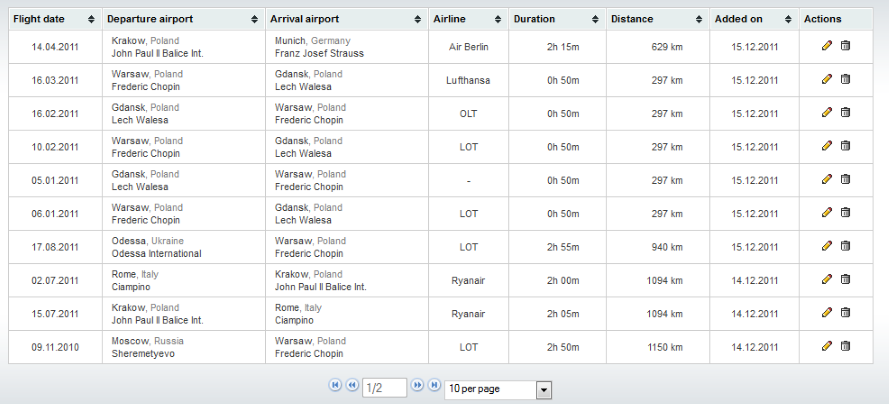

So, if there were fewer flights, fares would increase. “But on any given day you might have weather, air traffic control or company network disruptions and the system must adjust.”īut Hendricks believes on most days airlines could be doing more to ensure the flow of planes in to the airport is as efficient as possible as this is integral to their economic success.Īnother option could be to reduce the number of flights – but airline flight schedules are designed to meet buyer demand. Part of the problem is schedules are designed by airlines for perfect conditions, Tom Hendricks, a retired airline executive, told BBC Worklife. Baiada says there is a better way – they could be tracking their aircraft and adjusting operations throughout the flight, managing aircraft sequencing, choosing flight speeds and paths leaving air traffic control to concentrate on separation and safe operation of the airspace. “Once an aircraft is off the gate, the airlines forget about it until it arrives at the next airport,” he explains. But to date they have left it to air traffic control to remedy once planes are in the air. But this has not moved the needle on delays, which are stubbornly stuck at 30%.Ī lot of different things can cause a delay but Baiada believes 80% of the factors involved – like schedule, airport arrival flow queueing, aircraft availability, gate availability, maintenance and crew legality – are within the airlines’ control.

To be fair, global airlines have invested billions of dollars in technologies to enable more efficient flight paths, according to industry body Airlines for America. So air traffic control stretches out aircraft approaches, slowing arrival rates. Air traffic control must make allowances for this, because too many planes arriving around the same time overwhelms airports. This means that airlines still have a window to hit to be ‘on time’, rather than a very specific slot – which can lead to congestion. The DoT created this global standard for measuring “on time” before the advent of modern data and communications that, today, make A0 achievable. But anything between A0 and A14 is not considered late by the US Department of Transportation. So, any delay beyond A0 adds the number of minutes the aircraft arrived late at the gate – A15, for an aircraft that’s 15 minutes late.

There’s even a language for describing this punctuality. If a flight is early or late, it can disrupt several other things – like gate availability and airport capacity. The ultimate goal is ‘A0’, or arrival at the gate exactly on time. “By padding, airlines are gaming the system to fool you.” The figure used to be 40% but padding – not operational improvements – boosted on-time arrival rates. “On average, over 30% of all flights arrive more than 15 minutes late every day despite padding,” says Captain Michael Baiada, president of aviation consultancy ATH Group citing the US Department of Transportation’s Air Travel Consumer Report. However, this global trend poses multiple problems: not only does your journey take longer but creating the illusion of punctuality means there’s no pressure on airlines to become more efficient, meaning congestion and carbon emissions will keep rising. It might seem innocuous enough to the passenger – after all, what it can mean is that even though you take off late, you’re pleasantly surprised to arrive on time at your destination. Skiplagging: The travel hack airlines hate.Because these flights were consistently late, airlines have now baked delays experienced for decades into their schedules instead of improving operations. Padding is the extra time airlines allow themselves to fly from A to B. And it’s a secret the airlines don’t want you to know about, especially given the spillover effects for the environment. It’s called “schedule creep”, or padding. Today, these same flights now take six-plus hours and 75 minutes respectively, although the airports haven’t moved further apart. In the 1960s it took five hours to fly from New York to Los Angeles, and just 45 minutes to hop from New York to Washington, DC. Read all of the year's biggest hits here. As we head into 2020, we're running the best, most insightful and most essential Worklife stories from 2019.


 0 kommentar(er)
0 kommentar(er)
